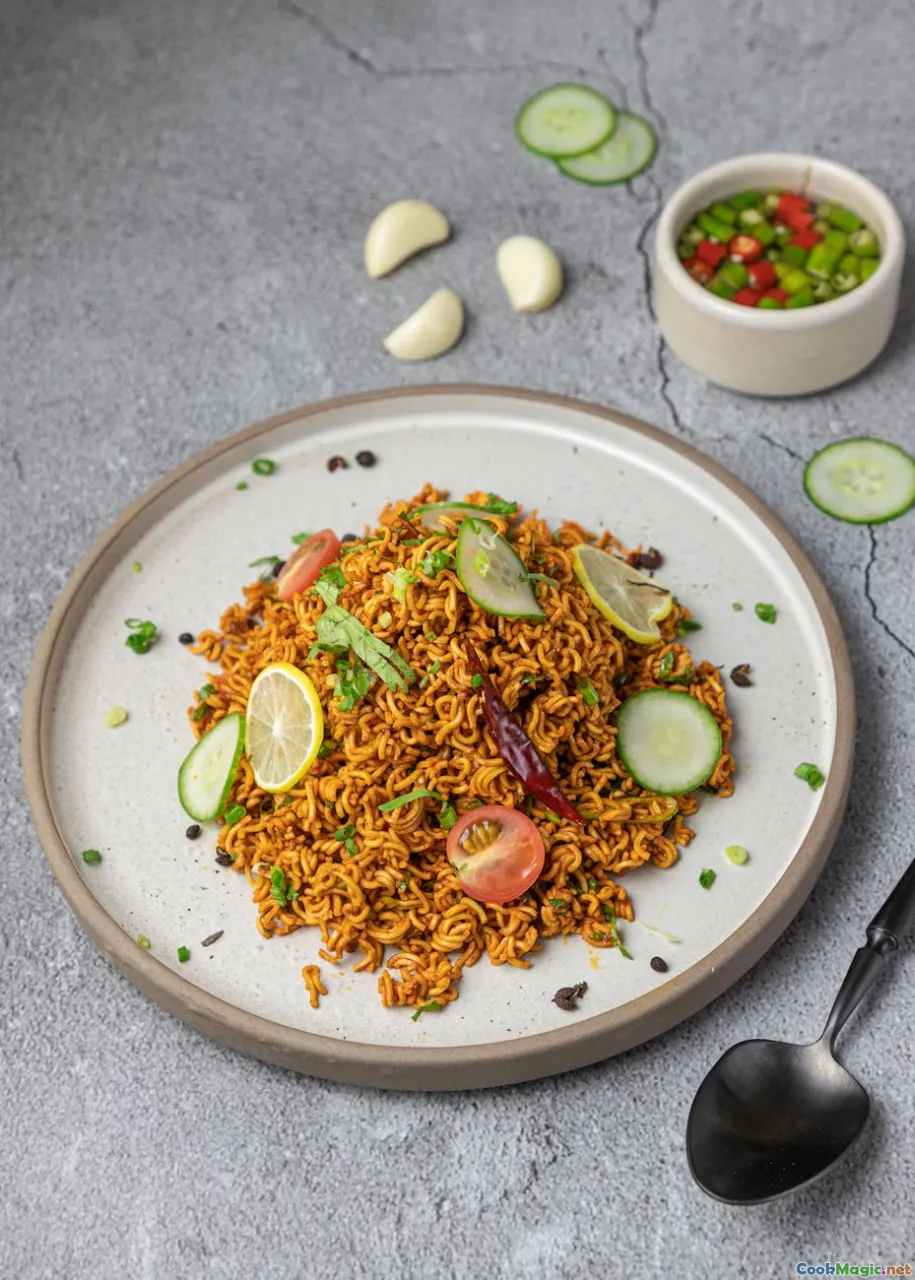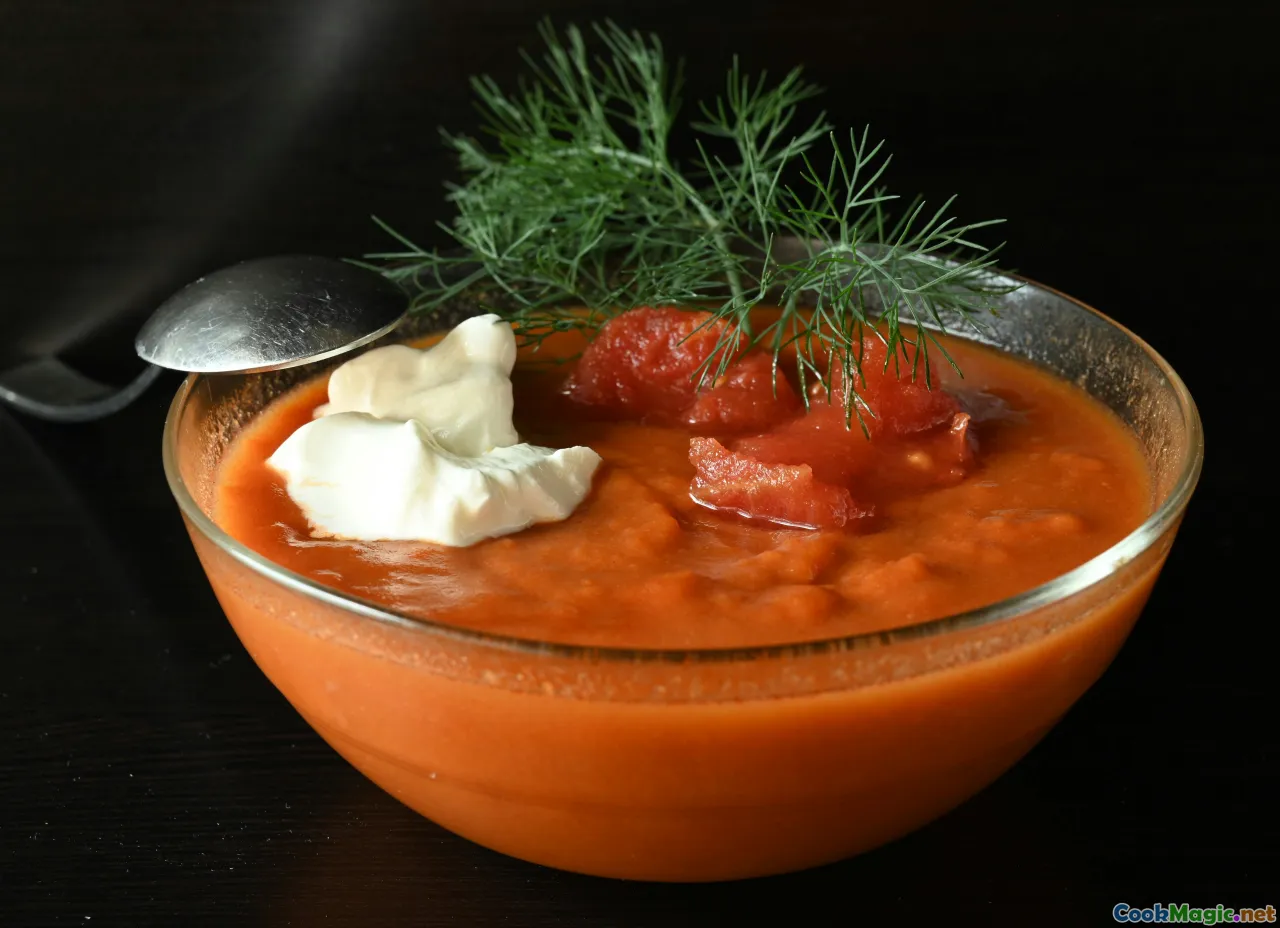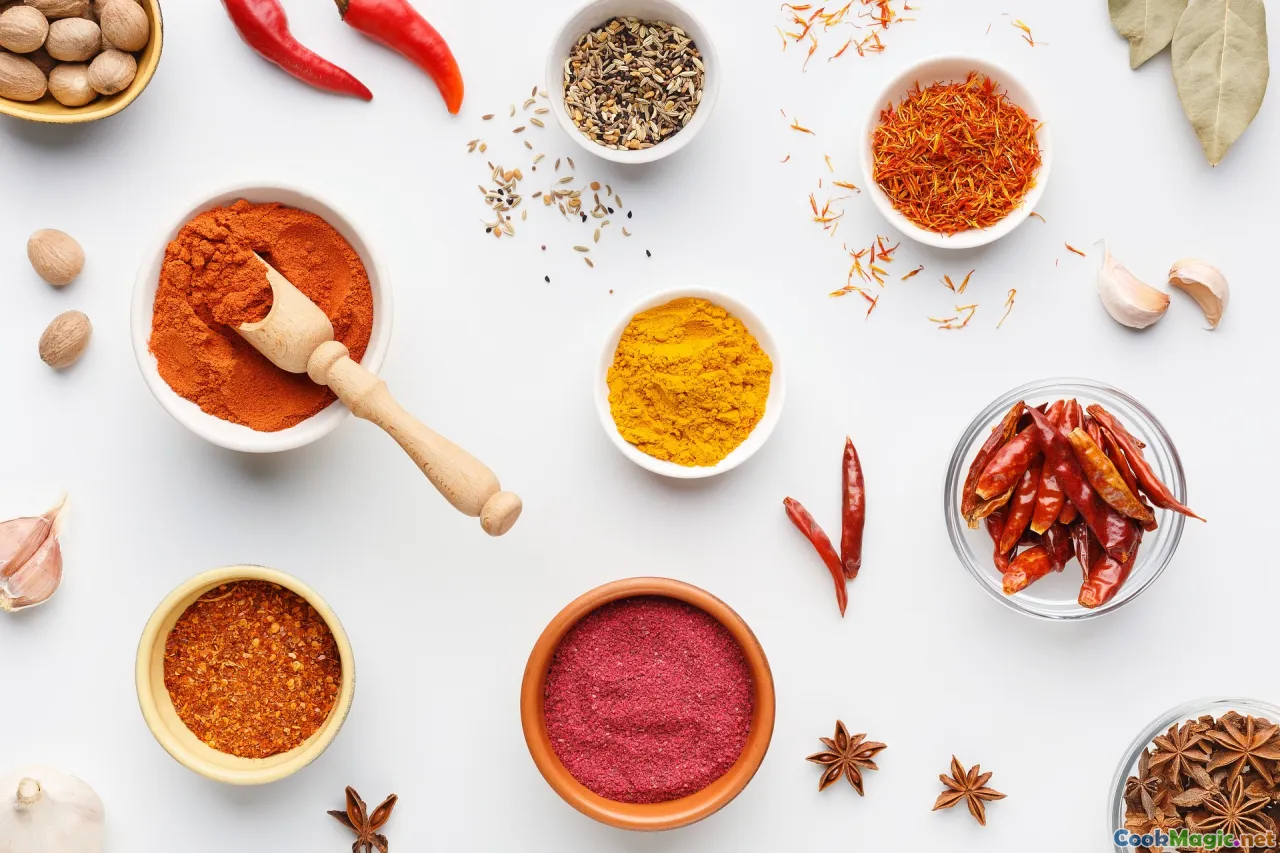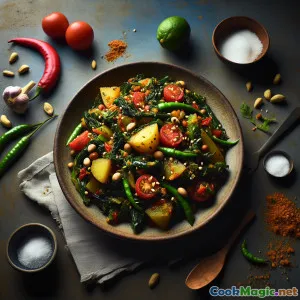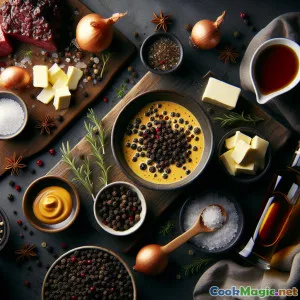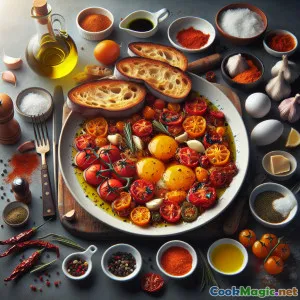
Rouille de tomate Magnolia com o calor do açafrão
(Magnolia Tomato Rouille with Saffron Heat)
(0 Avaliações)0
160
outubro 11, 2025
Reportar um problema
Ingredientes
-
180 ml Azeite extra virgem
(Choose a mild, fruity Provençal-style oil)
-
80 g Pão rústico, sem casca
(Day-old bread works best; gluten-free bread is fine)
-
120 ml Água morna
(Use to soak bread and bloom saffron)
-
1 medium Tomate maduro
(Peeled and seeded; Roma or San Marzano preferred)
-
30 g Tomates secos ao sol (em óleo), escorridos
(Adds umami depth and color)
-
4 cloves Dentes de alho
(Fresh, firm cloves for best punch)
-
0.5 tsp Fios de açafrão
(Bloom in warm water to release aroma)
-
0.5 tsp Pimenta caiena
(Adjust heat level to taste)
-
0.5 tsp Páprica defumada
(Optional smoky layer)
-
1 tbsp Suco de Limão Fresco
(Brightens and balances richness)
-
1 tsp Sal marinho
(Fine sea salt; season gradually)
-
1 large Gema de Ovo
(Traditional emulsifier; omit for vegan version)
-
1 tsp Vinagre de vinho branco
(Or sherry vinegar for rounder acidity)
-
0.5 tsp água de flor de laranjeira
(Floral accent echoing magnolia; use sparingly)
-
0.25 tsp Pimenta-do-reino moída na hora
(Adds gentle warmth)
-
8 slices Fatias de baguete torradas
(For serving or croûtes)
-
60 ml Caldo de peixe morno (substitui parte da água)
(Optional for deeper seafood pairing)
(Choose a mild, fruity Provençal-style oil)
(Day-old bread works best; gluten-free bread is fine)
(Use to soak bread and bloom saffron)
(Peeled and seeded; Roma or San Marzano preferred)
(Adds umami depth and color)
(Fresh, firm cloves for best punch)
(Bloom in warm water to release aroma)
(Adjust heat level to taste)
(Optional smoky layer)
(Brightens and balances richness)
(Fine sea salt; season gradually)
(Traditional emulsifier; omit for vegan version)
(Or sherry vinegar for rounder acidity)
(Floral accent echoing magnolia; use sparingly)
(Adds gentle warmth)
(For serving or croûtes)
(Optional for deeper seafood pairing)
Nutrição
- Porções: 8
- Tamanho da Porção: 2 colheres de sopa (30g)
- Calories: 220 kcal
- Carbohydrates: 0 g
- Protein: 2 g
- Fat: 21 g
- Fiber: 1 g
- Sugar: 2 g
- Sodium: 260 mg
- Cholesterol: 20 mg
- Calcium: 25 mg
- Iron: 0.8 mg
Instruções
-
1 - Prepare and peel the tomato:
Score the tomato, blanch 30 seconds in boiling water, then shock in ice water. Peel, seed, and roughly chop the flesh.
-
2 - Bloom saffron:
Stir saffron into the warm water (or part water, part fish stock). Let steep until golden and fragrant.
-
3 - Soak the bread:
Tear bread into a bowl. Pour over just enough saffron liquid to saturate. Rest 2–3 minutes, then squeeze gently to form a soft paste.
-
4 - Make a garlic base:
In a mortar or food processor, pound or pulse garlic with sea salt to a smooth paste. Add chopped tomato and optional sun-dried tomatoes; process until almost smooth.
-
5 - Build the body:
Add the soaked bread, lemon juice, and vinegar. Process to a thick, cohesive paste. If using egg yolk, add now and blend briefly.
-
6 - Emulsify with oil:
With the machine running, stream in olive oil slowly to form a glossy, stable emulsion. If too thick, loosen with a teaspoon of remaining saffron liquid.
-
7 - Season and perfume:
Fold in cayenne, smoked paprika, black pepper, and orange blossom water. Taste and adjust salt, acidity, and heat.
-
8 - Rest and Serve:
Cover and chill 10 minutes to meld. Serve as a fiery smear on baguette croûtes or dollop into bouillabaisse and fish soups.
Score the tomato, blanch 30 seconds in boiling water, then shock in ice water. Peel, seed, and roughly chop the flesh.
Stir saffron into the warm water (or part water, part fish stock). Let steep until golden and fragrant.
Tear bread into a bowl. Pour over just enough saffron liquid to saturate. Rest 2–3 minutes, then squeeze gently to form a soft paste.
In a mortar or food processor, pound or pulse garlic with sea salt to a smooth paste. Add chopped tomato and optional sun-dried tomatoes; process until almost smooth.
Add the soaked bread, lemon juice, and vinegar. Process to a thick, cohesive paste. If using egg yolk, add now and blend briefly.
With the machine running, stream in olive oil slowly to form a glossy, stable emulsion. If too thick, loosen with a teaspoon of remaining saffron liquid.
Fold in cayenne, smoked paprika, black pepper, and orange blossom water. Taste and adjust salt, acidity, and heat.
Cover and chill 10 minutes to meld. Serve as a fiery smear on baguette croûtes or dollop into bouillabaisse and fish soups.
Mais sobre: Rouille de tomate Magnolia com o calor do açafrão
About Magnolia Tomato Rouille
Rouille is the brash, sunlit cousin of aioli—the Provençal condiment whose name means “rust,” a nod to its burnished hue. Traditionally whisked with garlic, bread, chili and saffron, rouille rides atop bowls of bouillabaisse or spreads onto croûtes to be dunked into the broth. This Magnolia Tomato Rouille leans into the classic while adding a soft floral whisper—orange blossom water—to evoke the elegance of magnolia without introducing unfamiliar botanicals. The result is a sauce that’s equal parts silken, spicy, and aromatic.
What Makes This Version Unique
- Tomato-forward: Fresh peeled tomato and optional sun-dried tomatoes add brightness and umami without dulling the saffron.
- Floral finesse: A few drops of orange blossom water call to mind magnolia blooms—fragrant but restrained—rounding the edges of garlic and heat.
- Flexible thickener: Day-old bread remains traditional and reliable, giving a stable emulsion whether or not you include the optional egg yolk.
Technique Tips for Success
- Bloom the saffron: Warm liquid unlocks its color and perfume. Let it steep long enough to turn the water golden—rushing this step mutes the payoff.
- Control moisture: Add just enough saffron liquid to the bread to form a soft paste. Excess water dilutes flavor and makes emulsifying tricky.
- Emulsify slowly: Drizzle olive oil in a thin, steady stream while blending. If using a mortar and pestle, incorporate oil a teaspoon at a time, working it in thoroughly before adding more.
- Balance acidity: Lemon juice brightens; white wine or sherry vinegar sharpens. Use both for a layered tang that cuts the olive oil’s richness.
- Season last: Heat and salt intensify as the rouille rests. Taste after chilling and adjust gently.
Serving Ideas
- Classic: Smear on toasted baguette croûtes and float them in bouillabaisse or fish soups.
- Modern: Use as a dipping sauce for grilled shrimp, charred octopus, or roasted cauliflower steaks.
- Sandwich spread: Transform a tuna pan bagnat or a grilled vegetable focaccia with a fiery swipe of rouille.
- Vegetable board: Pair with blanched asparagus, artichoke hearts, and roasted peppers.
Ingredient Swaps & Diet Notes
- Vegan: Omit the egg yolk. Bread provides excellent body; the emulsion remains stable if oil is added gradually.
- Gluten-free: Use a sturdy gluten-free loaf for soaking. Avoid sweet, brioche-like breads; you want a neutral crumb.
- Heat management: Replace cayenne with milder Espelette pepper for a fruity, elegant warmth.
- Liquids: Substitute part of the soaking water with warm fish stock for extra savor when serving with seafood.
Make-Ahead, Storage, and Food Safety
- Make up to 24 hours in advance; the flavors deepen overnight.
- Store covered in the refrigerator for 3–4 days.
- If using raw egg yolk, use pasteurized eggs and keep the rouille below 5°C/41°F. Discard after 48 hours as a safety precaution.
- If the rouille thickens in the fridge, whisk in a teaspoon of warm water to loosen just before serving.
Troubleshooting
- Broken emulsion: Whisk a teaspoon of water or an extra yolk (if using eggs) in a clean bowl, then slowly drizzle the split rouille into it, whisking constantly.
- Too spicy: Add more soaked bread and a touch of olive oil to dilute heat. Counterbalance with an extra squeeze of lemon.
- Too floral: Orange blossom water is potent. If overdone, temper with a pinch of salt and a few drops of vinegar.
Cultural Notes and History
Rouille is inseparable from Marseille’s maritime identity. Fishermen once thickened it with leftover bread and enlivened it with the region’s saffron and peppers. Its role was practical—add richness and heat to humble fish stews—and poetic, a ribbon of sunset color streaking across a bowl of bouillabaisse. By weaving in tomato—a beloved Mediterranean staple—and a measured floral note, this Magnolia Tomato Rouille honors tradition while embracing the culinary creativity that defines modern Provençal cooking.
Final Thoughts
This rouille is bold yet balanced—the saffron’s honeyed aroma, the garlic’s brio, the tomato’s brightness, and that faint magnolia-like perfume harmonize into something memorable. Spread it generously, stir it into hot broth, or let it star on a simple toasted croûte. Whatever the stage, it brings the sunny, salt-kissed spirit of the Mediterranean straight to the table.

